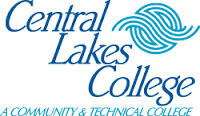What do they do?
Erect and repair fences and fence gates, using hand and power tools.
Also known as:
Fence Builder, Fence Contractor, Fence Erector, Fence Installer, Fence Laborer, Fence Mechanic, Fence Technician (Fence Tech), Gate Technician (Gate Tech), Wood Fence Erector
-
2.3%
Change
Ranks #28 in job growth rate120Job Openings
Ranks #10 in net job growth
Looking for colleges that offer a specific major? Use the College Match Tool to find your best-matched schools and discover your estimated Net Price!
- High school diploma equivalent (42%)
- Less than high school diploma (33%)
- Some college, no degree (16%)
- Bachelor's degree (6%)
- Associate's degree (3%)
- Master's degree (<1%)
- Doctorate or Professional Degree (<1%)
Most Popular Majors that prepare Fence Erectors
-
#1
-
Degrees Granted
48
-
Female Students
5
-
Male Students
43
-
Median Starting Salary
$55,200
-
-
#2
-
Degrees Granted
46
-
Female Students
2
-
Male Students
44
-
Median Starting Salary
$47,900
-
-
#3
-
Degrees Granted
3
-
Female Students
0
-
Male Students
3
-
Median Starting Salary
$55,200
-
-
#4
-
Degrees Granted
2
-
Female Students
0
-
Male Students
2
-
Median Starting Salary
$55,200
-
People in this career often know a lot about:
- Customer and Personal Service - Knowledge of principles and processes for providing customer and personal services. This includes customer needs assessment, meeting quality standards for services, and evaluation of customer satisfaction.
- Building and Construction - Knowledge of materials, methods, and the tools involved in the construction or repair of houses, buildings, or other structures such as highways and roads.
- Transportation - Knowledge of principles and methods for moving people or goods by air, rail, sea, or road, including the relative costs and benefits.
- Administration and Management - Knowledge of business and management principles involved in strategic planning, resource allocation, human resources modeling, leadership technique, production methods, and coordination of people and resources.
- Design - Knowledge of design techniques, tools, and principles involved in production of precision technical plans, blueprints, drawings, and models.
- Mathematics - Knowledge of arithmetic, algebra, geometry, calculus, statistics, and their applications.
- English Language - Knowledge of the structure and content of the English language including the meaning and spelling of words, rules of composition, and grammar.
- Education and Training - Knowledge of principles and methods for curriculum and training design, teaching and instruction for individuals and groups, and the measurement of training effects.
People in this career often have talent in:
- Manual Dexterity - The ability to quickly move your hand, your hand together with your arm, or your two hands to grasp, manipulate, or assemble objects.
- Trunk Strength - The ability to use your abdominal and lower back muscles to support part of the body repeatedly or continuously over time without "giving out" or fatiguing.
- Multilimb Coordination - The ability to coordinate two or more limbs (for example, two arms, two legs, or one leg and one arm) while sitting, standing, or lying down. It does not involve performing the activities while the whole body is in motion.
- Static Strength - The ability to exert maximum muscle force to lift, push, pull, or carry objects.
People in this career often do these activities:
- Determine appropriate locations for operations or installations.
- Position structural components.
- Measure work site dimensions.
- Mark reference points on construction materials.
- Verify alignment of structures or equipment.
- Install fencing or other barriers.
- Dig holes or trenches.
- Install wooden structural components.
- Mix substances or compounds needed for work activities.
- Pour materials into or on designated areas.
- Cut wood components for installation.
- Communicate with clients about products, procedures, and policies.
- Install metal structural components.
- Operate detonation equipment.
- Weld metal components.
This page includes data from:

 Occupation statistics: USDOL U.S. Bureau of Labor Statistics Occupational Employment Statistics
Occupation statistics: USDOL U.S. Bureau of Labor Statistics Occupational Employment Statistics


















